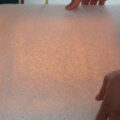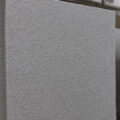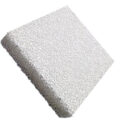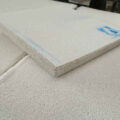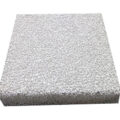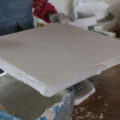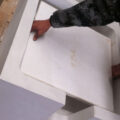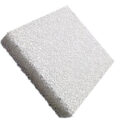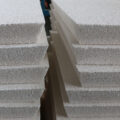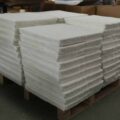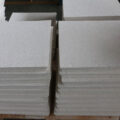Ceramic foam filter is a particularly useful filter in the filtration of molten metal. Ceramic foam filter manufacturing process is simple, immers the polyurethane foam in the ceramic slurry, and fires the polyurethane foam. It can make porous, hard, self-sustaining ceramic foam filter products.

Ceramic Foam Filter Manufacturing Process
The flexible foam material is impregnated with the aqueous ceramic slurry so that the fibrous web is coated with it and the voids are filled with it. Generally, it is preferable to simply immerse the foam in the slurry for a short enough time to ensure that the foam is completely impregnated.
Then the impregnated foam material is compressed to discharge a part of the slurry, while the fibrous web is partially covered by it and has multiple plugged pores on the entire body to increase the tortuosity of the flow path, that is, evenly distributed in the entire ceramic body. In continuous operation, the impregnated foam can be passed through preset rolls to achieve ideal discharge of the slurry from the foam and maintain the desired amount of impregnation therein. Naturally, this can be done manually by simply squeezing the flexible foam material to the desired degree. At this stage, the foam is still flexible and, if necessary, can be formed into a structure suitable for the specific filtering task, namely a curved plate, a hollow cylinder, etc. The foam formed must be kept in place by conventional means until the organic matter disappears. The substrate is decomposed, or preferably until the ceramic is sintered. The impregnated foam is then dried by any suitable means, such as air drying, accelerated drying at a temperature of 100°C to 700°C for 15 minutes to 6 hours, or by microwave drying. Air drying can be completed within 8 to 24 hours. After drying, the material is heated at an elevated temperature to sinter the ceramic coating on the fibrous mesh, leaving multiple blocked pores as described above.
The actual firing conditions depend on the ceramic. Generally, the temperature at this temperature exceeds 2000°F for at least 15 minutes and usually at least 1 hour, and usually less than 10 hours, to volatilize the flexible foam web and sinter the foam. The ceramic forms a solid sintered ceramic bond.
The resulting product is a porous, molten ceramic foam material that is essentially free of organic components, and is characterized by its mechanical, thermal and chemical properties superior to hitherto known ceramic foam materials. Ceramic foam is characterized by having an open-cell structure with multiple interconnected voids surrounded by a ceramic mesh, without the substantial absence of potentially harmful binders or glassy or clay phases. Foam is a solid sintered product, especially suitable for high temperature applications, such as iron or aluminum filtration. The foregoing structure results in increased desired physical properties, such as increased mechanical, thermal and chemical properties. Any small amount of organic additives will be discharged during the roasting process. If necessary, a small amount of inorganic additives can be used without compromising performance, such as less than 1% of sintering aids, such as zinc oxide, grain growth inhibitors, such as magnesium oxide, or inorganic rheology additives, such as clay.



